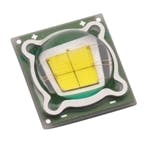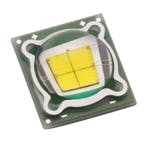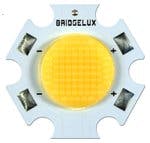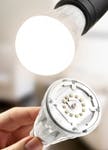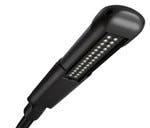This article was published in the July/August 2011 issue of LEDs Magazine.
View the Table of Contents and download the PDF file of the complete July/August 2011 issue.
++++
LFI report, part 1: Linear LED lighting, OLED and planar lighting
LFI report, part 2: Retrofit lamps, modular SSL
++++
Section 5: LED technology
++++
The LED technology that underlies innovative SSL products was also on full display at LFI. As mentioned previously, Philips won an LFI Innovation award with its Luxeon A family. Perhaps the most notable LED trend is the combination of red or amber LEDs with white LEDs to more-efficiently produce warm-white light. In its TrueWhite-based lighting products, Cree has used sensors to monitor the white and red emitters to detect differences in lumen depreciation and adjust drive current accordingly. The company has now decided that the sensor is not needed, eliminating it in the previously mentioned CR linear fixture. Cree’s VP of research and development Paul Pickard said, “Our longevity data indicates similar depreciation rates in both colors of LEDs used in Cree TrueWhite technology. This allows us to design fixtures that maintain their specs, over their lifetime, with no adjustments.”
++++
Section 6: Outdoor lighting
++++
The established players in LED-based outdoor-area lighting were all present at LFI, most of whom utilize relatively-small LEDs mounted on a circuit board in an array, and total-internal-reflection (TIR) optics on each LED to form a beam pattern. It’s generally been considered problematic to control the light from larger LED sources although such sources could offer advantages in outdoor lighting since many such applications require significant light output. LFI witnessed more luminaire makers using larger sources. For example, Eagle Eye Lighting demonstrated lights that use its retrofit module based on larger Bridgelux arrays and reflectors that form the desired beam pattern.
